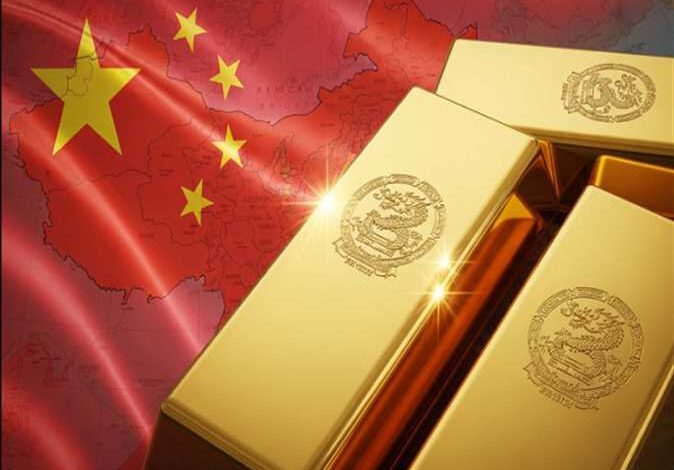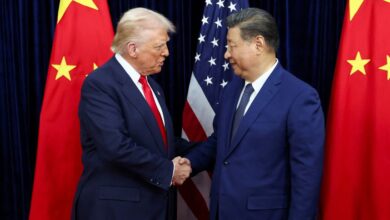
China has unveiled a new type of metal called “Pure Solid Gold”— a move intended to reinforce its position as the world’s leading gold producer— sparking intense debate across global gold and jewelry markets.
Opinions are polarized, with some dismissing the new substance as a deceptive Chinese marketing ploy to counter rising gold prices, while others are calling it merely a decorative accessory.
What is ‘Pure Solid Gold’?
China claims that Pure Solid Gold stands out from the Chinese gold used in traditional jewelry.
The latter, according to the announcement, consists of metallic accessories coated with a layer of gold only a few microns thick, lacking the true purity of 21 or 24 carats.
These traditional pieces are often hollow and lightweight, which gives the appearance of size without increasing the genuine gold content.
China highlighted that its new Pure Solid Gold boasts a 99.9 percent purity certificate (24 carats) and is significantly more resistant to scratching and deformation.
This makes it ideal for crafting luxurious and sophisticated fine jewelry designed for daily wear—a challenge that traditional, softer pure gold could not overcome, according to the developers.
‘Fake’ gold?
In response to the controversy, Egyptian Gold Jewelry Expert Amir Rizk stated that this “so-called Pure Solid Gold” is a novelty invented by China that, once dried, perfectly mimics the appearance and color of real gold.
Rizk clarified this new material does not count as actual gold: “This material remains durable for a period and provides a layer of solidity, but it is not gold.”
Addressing speculations across social media platforms that the Chinese invention could disrupt and significantly lower global gold prices, the expert dismissed the concerns outright.
“All of this is propaganda intended to drive down the price of gold and influence the global market,” Rizk asserted.
This Chinese gold is merely plated and is not genuine, he said, concluding with a quality guarantee: “The most reliable gold in the world is Egypt’s, followed by Italy’s. Egypt’s hallmark is 100 percent certified.”
The former Secretary-General of the Gold Division, Nady Naguib, said that this “New Pure Solid Gold” is not pure gold but a manufactured substance.
He noted that China also has a history of creating imitation diamonds.
Naguib explained that gold extracted from the earth is completely different from manufactured gold, noting that the latter has no intrinsic value, is not considered gold, and may not appeal to buyers.
He stated that this new material is different from the existing “Chinese gold” already sold in markets, which he dismissed as nothing more than “Chinese accessories,” emphasizing the principle that “not everything coated in yellow is gold, and not all that glitters is gold.”
Genuine gold possesses special properties and must be recognized and hallmarked by the official Assays and Weights Authority after thorough analysis to determine its carat rating, Naguib explained.
He emphasized that if this Chinese product enters Arab or Egyptian markets, sellers must be honest with consumers.
Furthermore, they will not be able to issue a formal invoice stating that the product is pure gold; instead, the invoice must list it as imitation gold or accessory to avoid legal repercussions.
China’s Pure Solid gold is unsuitable for investment or savings
The Vice Chairman of the Gold and Jewelry Division, Lootfy al-Muneib, stated that scarcity is the factor that adds value to gold, as a natural mineral with highly valuable specifications.
Al-Muneib explained: “When I say I am creating a metal with specifications similar to gold—such as being rust-proof and color-fast—it can be used as an ornament or jewelry, but it is ultimately not gold; it is gold-like.”
This new substance is unsuitable for savings or investment and will have no impact on global gold markets, he stressed.
China claims several advantages
Chinese jewelry experts have highlighted several key advantages of this new Pure Solid Gold. Unlike 18 or 21-carat gold, it is claimed to maintain its luster and color over time, resisting external corrosion and environmental factors.
Specialists advise buyers to look for the ‘AU999’ mark, purchase from reputable retailers, and avoid resizing after purchase, as this type of gold is reportedly difficult to solder.




